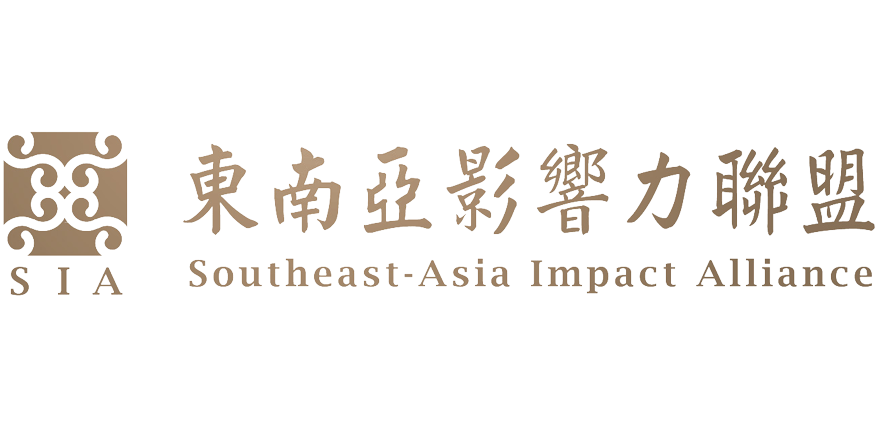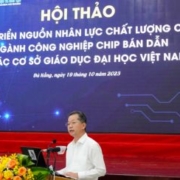Loosen the High-Quality Semiconductor Chip Industry Workforce Constraint
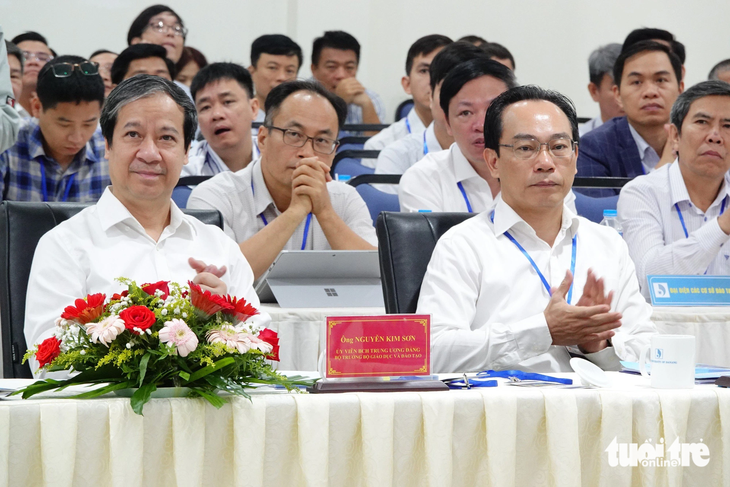 Minister of Education and Training Nguyen Kim Son (left) chaired the workshop
Minister of Education and Training Nguyen Kim Son (left) chaired the workshop
On October 19th, the Ministry of Education and Training organized a High-Quality Workforce Development Seminar for the semiconductor chip industry, involving higher education institutions in Vietnam, at the University of Danang in Danang City.
The seminar was presided over by the Minister of Education and Training, Mr. Nguyen Kim Son. The event had the participation of representatives from the Ministry of Planning and Investment, the Ministry of Science and Technology, the Ministry of Information and Communications, and leaders from Danang City.
The seminar attracted the involvement of representatives from nearly 40 higher education institutions in Vietnam. These are institutions known for offering large-scale programs relevant to fields closely related to semiconductor chip design.
Furthermore, there was also the participation of representatives from domestic and international companies operating in the semiconductor chip design field, such as Intel Corporation, Synopsys Vietnam, Cadence, Qorvo Vietnam, Viettel High-Tech Industries Corporation, VNPT Technology Vietnam, and several experts in the semiconductor industry.
During the seminar, Mr. Hoang Minh Son, Deputy Minister of Education and Training, pointed out that the shortage of high-quality human resources, especially in the high-tech sectors, is a significant bottleneck in attracting large technology corporations to shift their investment in research, development, and production to Vietnam.
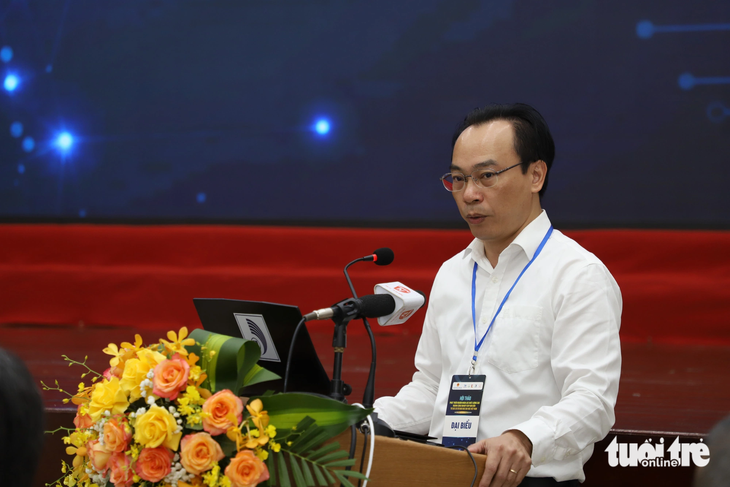
Deputy Minister of Education and Training Hoang Minh Son informed about the shortage of high-quality human resources, especially in high-tech fields.
Especially, since the establishment of the Comprehensive Strategic Partnership with the United States in September last year, significant opportunities for cooperation in the development of high-tech sectors such as artificial intelligence, semiconductor technology, new energy technology, etc., have opened up. However, the practical implementation is currently facing substantial challenges due to the shortage of human resources, both in terms of quantity and quality.
The primary cause of the high-quality workforce shortage in high-tech fields lies in the inherent dynamics of supply and demand within the education and labor market relationship.
The semiconductor industry, including microelectronics, represents a highly promising sector in terms of future high-caliber, high-quality workforce demand. Like many other high-tech sectors, the semiconductor industry necessitates significant investments and imposes specific requirements on the availability of skilled human resources.
Mr. Son mentioned that the Ministry of Education and Training is currently formulating an industry-wide action plan to stimulate the implementation of training programs and rapidly enhance both the quantity and quality of high-quality human resources, particularly in the semiconductor field, including microchip design engineers.
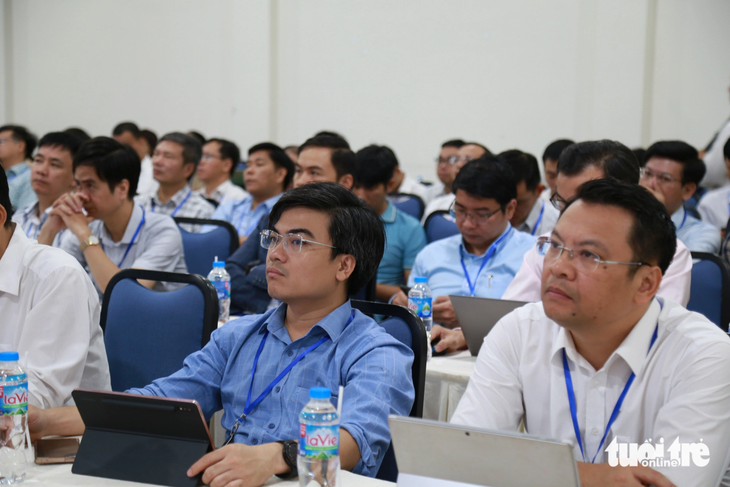
The conference attracted the participation of representatives of nearly 40 Vietnamese higher education institutions
At the seminar, Assoc. Prof. Dr. Nguyen Duc Minh, representing the Hanoi University of Science and Technology, stated that Vietnam currently has 5,000 engineers, with an annual demand growth of 10-15%. This demand is primarily for design engineers (physical, layout) and testers (DV).
It is forecasted that by 2024, Vietnam’s semiconductor industry will surpass a value of 6.16 billion USD. To maintain a production facility similar to TSMC, approximately 60,000 skilled personnel are required. In 2023, TSMC needs to hire an additional 6,000 semiconductor production engineers. Samsung already employs around 10,000 R&D engineers as of 2021. Vietnam’s semiconductor industry requires 10,000 engineers annually.
Mr. Minh presented market forecasts from Deloitte, Nikkei Asia, Time News, and KED Global. These sources indicate that 65% of the semiconductor microchip industry market share is dominated by five countries and regions: the United States, Taiwan, China, South Korea, and Japan. These nations and territories are involved in both design (accounting for 50% of added value) and production (contributing 30% of added value) phases.
Key Takeaways:
The seminar aims to unify, enhance awareness, and foster determination to collaboratively act among top universities, with the interest, investment, and policy framework development of the state, and the active participation of local authorities and businesses. This collective effort will boost the training of high-quality human resources, serving the development of the country’s semiconductor chip industry.
Source: 聯合新聞網 |Link
Visit our service | Link
